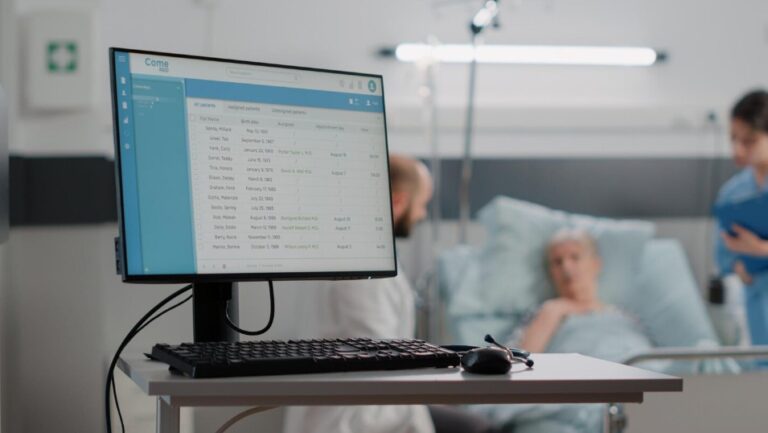
The modern healthcare journey is no longer limited to in-person visits. Patients today expect timely updates, reminders, and seamless digital communication with their providers. Unfortunately, many healthcare organizations still struggle with missed appointments, patient disengagement, staff burnout, and fragmented communication. These challenges not only affect operational efficiency but also compromise patient outcomes and satisfaction.
This is where automated patient messaging comes in. By leveraging secure, technology-driven communication, healthcare organizations can streamline interactions, enhance outcomes, and foster stronger patient-provider trust. Whether it’s sending automated reminders, delivering lab results, or checking on patient recovery, automated patient messaging ensures the correct information reaches patients at the right time.
Why Automated Patient Messaging Matters in Healthcare
Patient messaging has become a critical element in delivering continuous and connected care. Unlike traditional phone calls or paper notices, automated messaging is instant, consistent, and far more reliable.
Key reasons why it matters:
- Reduces missed appointments: Patients are more likely to attend scheduled visits when they receive reminders via text or secure channels.
- Boosts patient engagement: Patients feel supported between visits, leading to increased adherence to treatment plans.
- Lowers staff workload: Automated systems handle repetitive tasks, freeing clinical teams to focus on care delivery.
- Strengthens trust: HIPAA-compliant communication assures patients that their sensitive health information is secure.
- Supports Value-Based Care – Automated reminders and secure updates improve metrics like readmission rates, immunization compliance, and well-visit completion.
Key Benefits of Automated Patient Messaging in Healthcare
1. Improved Appointment Adherence
Missed appointments cost U.S. healthcare providers over $150 billion annually. Automated reminders via HIPAA secure texting significantly reduce no-shows by sending patients timely confirmations, rescheduling options, and transportation details.
2. Enhanced Patient Experience
Patients value convenience and personalization. By receiving automated updates, lab results, or check-ins, they feel cared for beyond the clinic walls.
3. Reduced Administrative Burden
Frontline staff often spend hours manually calling patients. Automated patient communication software replaces these repetitive tasks, saving time and enabling clinicians to focus on delivering care. For instance, clinics using healthcare automation tools like Quincy saw the result in staff savings per patient.
4. Secure, Compliant Communication
HIPAA regulations require all communication of Protected Health Information (PHI) to be secure. Automated messaging platforms provide end-to-end encryption, audit trails, and secure data storage, ensuring compliance while maintaining trust.
5. Actionable Analytics
Beyond delivery, these platforms track patient responses, offering insights into no-show patterns, medication adherence, and overall engagement. This data powers population health initiatives and performance-based reimbursement models.
Best Use Cases of Automated Patient Messaging
- Appointment Reminders & Confirmations – Reducing no-shows by delivering automated reminders directly to patients’ devices.
- Medication & Treatment Adherence – Reminding patients to take medications or follow care instructions.
- Pre- and Post-Procedure Instructions – Ensuring patients are prepared before and after surgeries or diagnostic tests.
- Test Results Communication – Providing secure, timely access to lab or imaging results.
- Population Health Campaigns – Engaging patients for wellness visits, immunization drives, and preventive screenings.
- Post-Discharge Follow-ups – Preventing readmissions by checking on recovery progress.
For example, QliqSOFT’s Quincy Patient Engagement Platform has demonstrated measurable improvements, including reducing no-shows by 36%, achieving a 32% reduction in readmissions, and tripling vaccine clinic participation.
Role of Technology in Enabling Automated Messaging
The success of automated secure patient messaging depends on technology that is secure, scalable, and patient-friendly.
1. AI & Conversational Chatbots: AI chatbots personalize communication, answer FAQs, and escalate to staff when needed. For example, QliqSOFT’s Quincy patient engagement platform helps patients request refills, prepare for procedures, and connect with providers.
2. App-less Engagement: One significant barrier in healthcare is patient reluctance to download apps. App-less platforms like Quincy deliver communication via text or web links, making it frictionless.
3. EHR Integration: Direct integration with Epic, Cerner, athena, and other EHRs ensures patient records and care workflows trigger seamless data synchronization messages.
4. HIPAA-Compliant Cloud Infrastructure: Secure cloud environments ensure encrypted data storage and transmission, safeguarding PHI while maintaining 24/7 accessibility.
5. Automation & Workflow Builders: No-code tools allow providers to design campaigns (e.g., “send flu vaccine reminders to all patients over 60”) without IT dependency.
Also Read: Spider Veins: Are There New Technologies for Treatment?
Final Thoughts
In today’s digital-first healthcare landscape, patient messaging is more than a convenience; it’s a necessity. Automated patient messaging reduces missed appointments, improves engagement, enhances trust, and alleviates staff workload. By adopting HIPAA-compliant communication solutions and advanced patient communication software, healthcare organizations can deliver continuous, personalized care while maintaining security and efficiency.
As the healthcare journey becomes increasingly patient-centered, automated messaging will remain a cornerstone of building stronger provider-patient relationships. With platforms like Quincy, healthcare organizations can achieve more engagement with less effort, ensuring patients stay connected, informed, and supported throughout their care journey.







